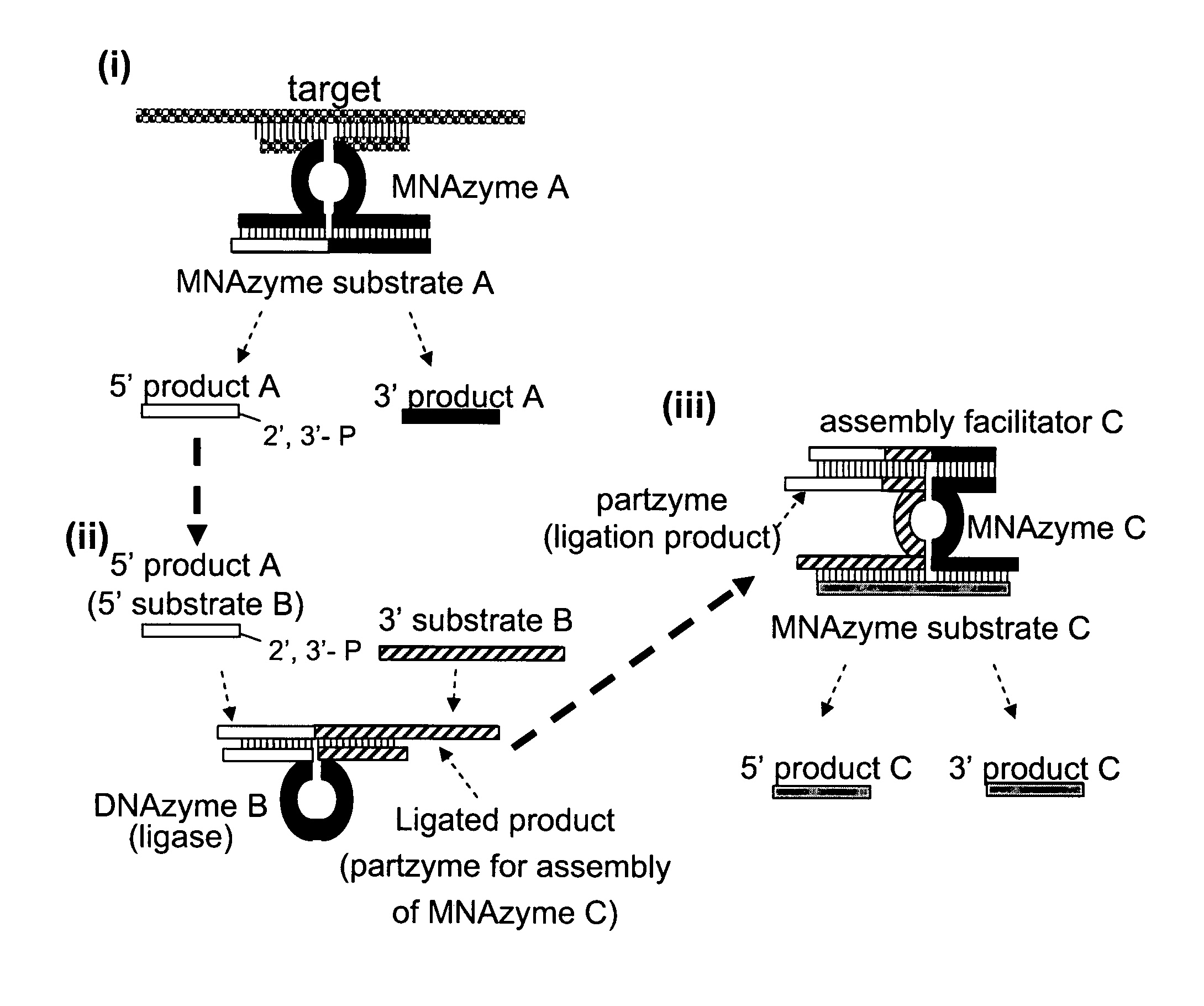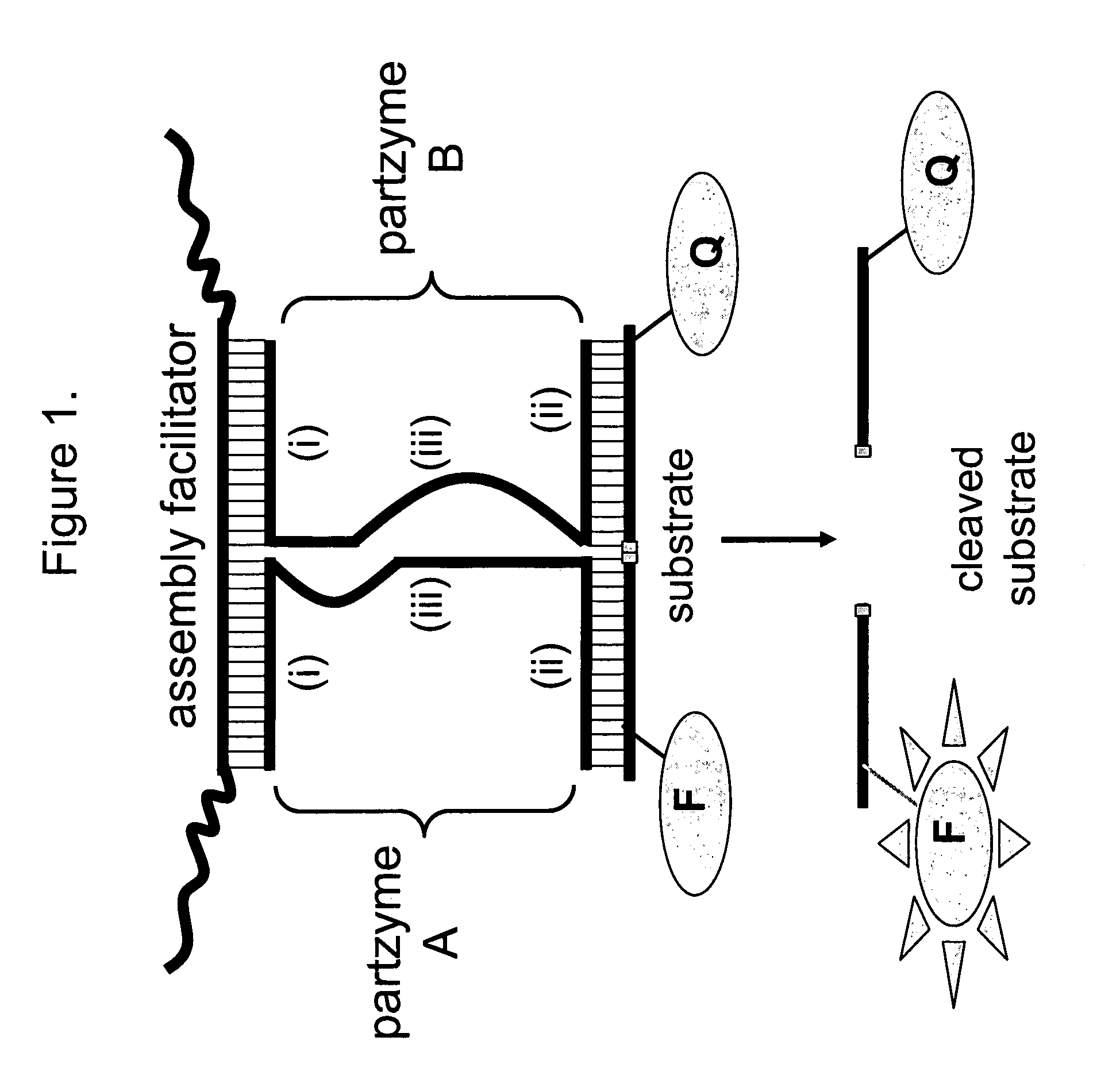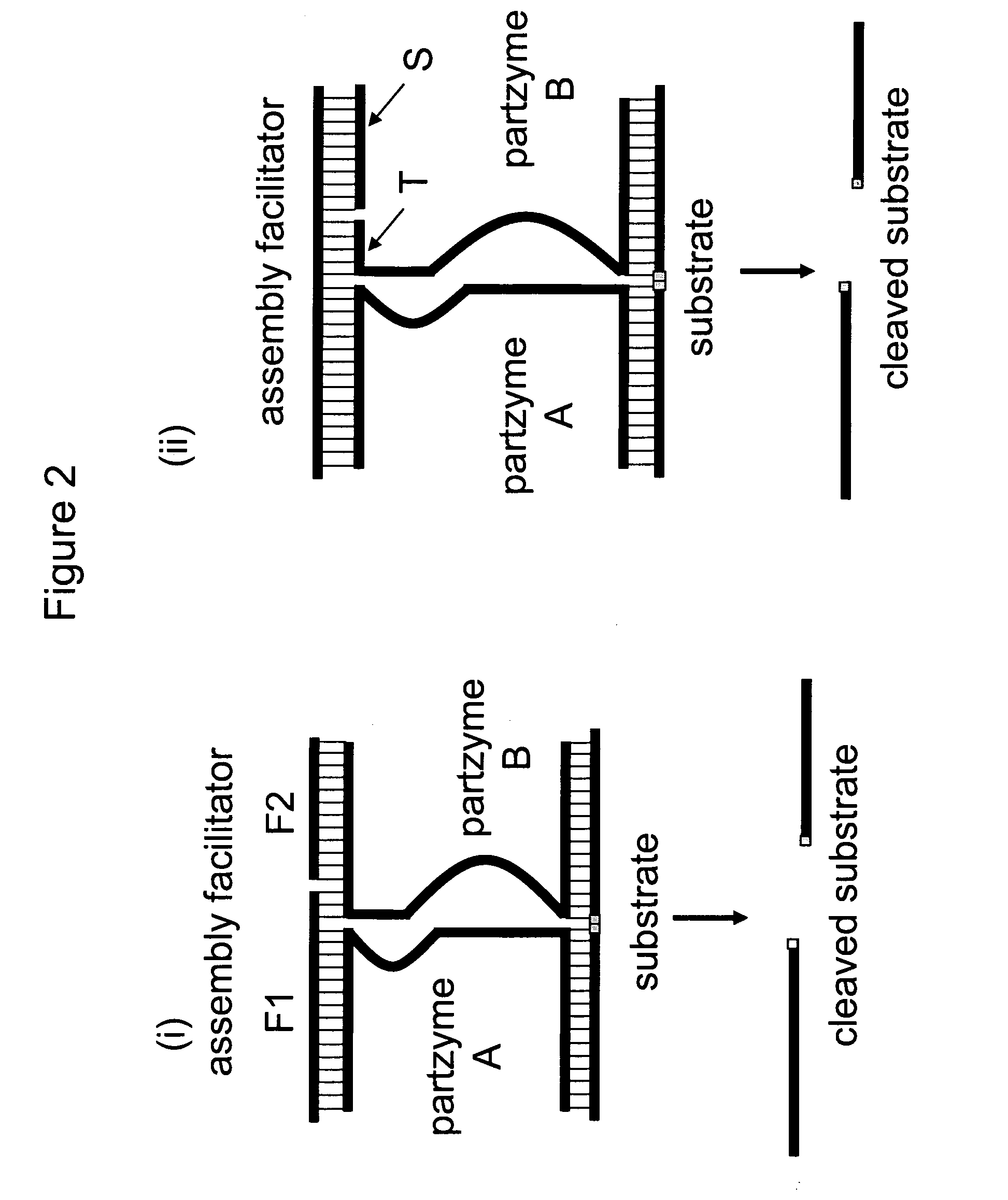Nucleic acid enzymes and complexes and methods for their use
a technology applied in the field of nucleic acid enzymes and complexes and methods for their use, can solve the problems of increasing the complexity and cost of reagent manufacture, and reducing the shelf life of kits containing reagents, and achieve the effect of facilitating the catalytic activity of said third mnazym
- Summary
- Abstract
- Description
- Claims
- Application Information
AI Technical Summary
Benefits of technology
Problems solved by technology
Method used
Image
Examples
example 1
Example of an MNAzyme where Partzyme B Comprises Two Molecules
[0495]Many variations on the basic design of an MNAzyme are contemplated in the present invention. In this example, MNAzymes were assembled in the presence of an assembly facilitator from partzyme A, and partzyme B which contained two components, namely one partzyme component with a truncated sensor arm, and one component that functions as a stabiliser arm. MNAzyme assembly occurs via Watson-Crick base recognition of the partzyme sensor arms and the assembly facilitator sequence. In the following example, the use of a truncated arm and stabiliser arm was demonstrated.
[0496]The MNAzyme detection strategy used in this example is illustrated in FIG. 2 (panel (ii)) and in FIG. 3 (i).
[0497]An example of the oligonucleotides required for this strategy are described below:
[0498]a) a partzyme A;
[0499]b) a partzyme B comprising a first component which contains a substrate arm, a partial catalytic core and truncated sensor arm; and...
example 2
Detection of Target Analytes using MNAzymes with Ligase Activity
[0515]An example of an MNAzyme which can modify at least two substrates, such as an MNAzyme with ligase activity could be used for detection of a nucleic acid target. An MNAzyme with ligase activity could be assembled from two partzymes which comprise active partial catalytic core pairs derived from, for example, the 7Q10 DNAzyme or the 7Z81 DNAzyme as exemplified in example 7 and 9 respectively. The partzymes could have sensor arms complementary to the target nucleic acid which could act as an assembly facilitator for an active MNAzyme ligase. The substrate arms could be complementary to two substrate molecules which contain ligatable sequences with appropriate termini (e.g. Table 4).
[0516]If the 5′ ligation substrate and the 3′ ligation substrate were each labelled with either a fluorophore and quencher dye respectively (or vice versa) then ligation could result in a decrease in fluorescence which could serve as an in...
example 3
Mechanisms for Facilitating and Inhibiting the Assembly of Active MNAzymes or MNAi Complexes
[0519]An MNAzyme is composed of partzymes, which assemble in the presence of one or more assembly facilitators, to form an active enzyme (e.g. FIGS. 1, 2, 4 (right hand panel) and FIG. 5 (i and ii)). The assembly facilitator(s), which binds to partzyme sensor arms, can be a target analyte, or can be a synthetic nucleic acid molecule(s) added to the reaction mix to drive MNAzyme assembly. In addition to their capacity to contribute to active MNAzyme assembly, partzymes can assemble into an inactive, non-catalytic, MNAi complex when they hybridise with an “activity inhibitor” molecule (FIG. 4 (left hand panel) and FIG. 5 (iii). Various alternative oligonucleotide sequences were tested for their capacity to regulate the assembly of either active MNAzyme or inactive MNAi complexes.
[0520]In this example (depicted in FIGS. 4 and 5), MNAzyme assembly was examined in the presence of (i) a single mole...
PUM
| Property | Measurement | Unit |
|---|---|---|
| temperature | aaaaa | aaaaa |
| temperature | aaaaa | aaaaa |
| temperature | aaaaa | aaaaa |
Abstract
Description
Claims
Application Information
 Login to View More
Login to View More - R&D
- Intellectual Property
- Life Sciences
- Materials
- Tech Scout
- Unparalleled Data Quality
- Higher Quality Content
- 60% Fewer Hallucinations
Browse by: Latest US Patents, China's latest patents, Technical Efficacy Thesaurus, Application Domain, Technology Topic, Popular Technical Reports.
© 2025 PatSnap. All rights reserved.Legal|Privacy policy|Modern Slavery Act Transparency Statement|Sitemap|About US| Contact US: help@patsnap.com



